 June 4, 2015 John E. Ross, KD8IDJ, Editor
| ||||||||||
Texas, Oklahoma Ham Volunteers Stand Down Following Spate of Severe Weather Severe storms and flooding in Texas and Oklahoma that extended beyond the Memorial Day holiday weekend kept ARES and SKYWARN volunteers busy or on alert through the rest of May, which now is being crowned as the wettest month on record in both states. Texas received more than 8.8 inches of rainfall during May, while Oklahoma got a whopping 14.4 inches. Wichita Falls, Texas, saw 17 inches of rain
during May, while Oklahoma City got nearly 19.5 inches. The resulting flooding and property damage -- with some severe wind incidents thrown in -- caused numerous ARES callouts and SKYWARN net activations. In Oklahoma, Section Emergency Coordinator Mark Conklin, N7XYO, said Amateur Radio volunteers provided communication for several American Red Cross damage assessment teams in the wake of flooding in Comanche County and elsewhere. "ARES-OK volunteers in action this month have provided 436 hours of service," Conklin reported on May 31. "Teams were deployed to the Bridge Creek community and Comanche and Leflore counties. In addition, Conklin added, nearly every storm complex that rolled through Oklahoma spawned numerous SKYWARN nets with volunteers providing "many hours of service." ARES teams in his state stood down on June 2.
South Texas Section Emergency Coordinator Frank Aguilar, N5SSH, said all districts in his Section had stood down by June 1. "Weather events are over, and the forecast does not show rain for the next week or two, which means search and rescue and clean-up will be the main focus," he said. A summary of activity showed that ARES volunteers assisted in local emergency operations centers and the Red Cross. In addition, he noted, SKYWARN nets were called up in vulnerable counties, and other ARES teams remained on standby in case they were needed. ARRL South Texas Section Manager Lee Cooper, W5LHC, called the spate of heavy rainfall, tornadoes, and flooding over some two-thirds of his state "pretty much unprecedented" for the region. "The main event is over," Cooper said this week. "We are looking at a approximately 10-day period of dry sunny weather in South Texas and do not anticipate any additional activations." This spring's torrential rains stood in stark contrast to the severe drought the region had experienced over the past few years. May's heavy rains have been linked to a burgeoning El Niño in the Pacific. While fair weather returned to the region this week, forecasters fear the now rain-saturated ground could make things worse during the hurricane season, which began on June 1. WX4NHC Reports It's Ready for Hurricane Season WX4NHC, the Amateur Radio station at the National Hurricane Center (NHC) in Miami, reports that it has stood the test and is ready for the 2015 Hurricane Season, which began on June 1 and will continue through November. WX4NHC conducted its Annual Station Test on May 30, at the end of Hurricane Preparedness Week. This marked the 35th year of volunteer public service by the WX4NHC Group at the NHC. WX4NHC Amateur Radio Asst. Coordinator Julio Ripoll, WD4R, said the station was tested on many frequencies and modes, including digital modes, and that all radio equipment and antennas performed well.
NOAA's Climate Prediction Center has forecast that the 2015 Atlantic hurricane season will likely be below normal, but, it added, "that's no reason to believe coastal areas will have it easy." For the 2015 hurricane season, NOAA has predicted a 70 percent likelihood of anywhere from six to 11 named storms (winds of 39 MPH or higher), of which three to six could become hurricanes (winds of 74 MPH or higher). That forecast included up to two "major hurricanes" (Category 3, 4, or 5) with winds of 111 MPH or greater. "A below-normal season doesn't mean we're off the hook," NOAA Administrator Kathryn Sullivan said. "As we've seen before, below-normal seasons can still produce catastrophic impacts to communities." Ripoll said WX4NHC logged contacts during the test with some emergency communication notables. These included FEMA Administrator Craig Fugate, KK4INZ, on EchoLink and on the Florida UHF SARnet, plus a 20 meter contact with FEMA Chief Technical Officer Ted Okada, K4HNL. WX4NHC also worked ARRL Emergency Preparedness Manager Mike Corey, KI1U, and Hurricane Watch Net (HWN) Manager Bobby Graves, KB5HAV. "Mike, Bobby, Craig, and Ted all understand very well how Amateur Radio can help their communities during and after severe weather and other natural disasters," Ripoll said. "We expressed our thanks to all of them for their strong support of the Amateur Radio volunteers and WX4NHC." Ripoll also expressed appreciation to SKYWARN volunteers. "You may never know, but your efforts may someday save someone's life," he added.
During the 8-hour test, contacts were made and surface reports received from many stations throughout the US and Canada, as well as in the Caribbean, Central America, and South America, Ripoll said. He noted that more than 40 D-STAR/D-RATS surface weather reports were received at WX4NHC. John Davis, WB4QDX, coordinated the D-Star/D-RATS net and reporting, Ripoll said. "We are excited of the potential that D-STAR/D-RATS modes can produce hurricane surface reports in a similar format that is used at WX4NHC," he said. "These reports may someday fill a very important gap in surface data during a hurricane that we could not receive on other modes." WX4NHC also took part in the Florida State Hurricane Exercise on the UHF SARnet, making contacts throughout Florida and with stations in emergency operations centers. SARnet currently has 25 UHF repeaters connected statewide, including one on the NHC campus. Radio Call Saves SOTA Climber Following Fall A Littleton, Colorado, radio amateur and mountaineer was happy to have his handheld transceiver along on May 17 after he slipped and fell from an icy ledge in Berthoud Pass while snowshoeing. Summits On The Air (SOTA) enthusiast Brad Byland, WA6MM, said he's been climbing and mountaineering for many years now and never before came this close to what he called "a possible life-ending disaster."
Byland said that while this was his first climb in the Berthoud Pass area, he was never "lost," as some media accounts reported. He had prepared to climb Mount Flora -- which would have been his 29th SOTA peak -- by studying maps and others' trip reports, plus he had his iPhone with GPS, a compass, and his radio along. "[T]hings went smoothly until about 12,700 feet," Byland said, at which point, with visibility deteriorating, he decided to turn back. "It wasn't long before I was in a total whiteout," he recounted. "The ground is white, the air around me is white, and I had no perception of direction and elevation. My iPhone GPS was of no use, as I couldn't read the display. I pulled out my compass for navigation." Byland said he knew the basic heading he should follow along the ridge, and he proceeded. "A short time later I had a strange feeling I was floating in air. I didn't realize I was falling until I landed on my back on a snow-filled ledge about 20 feet below a cornice," Byland continued. "I was quite surprised and amazed that I suffered no injuries." But he was essentially "stuck," and, while his snowshoes remained on, he was unable to climb back up, due to the overhanging nature of the cornice. "I needed to wait for better conditions," he concluded. "After about an hour I decided to make a call for help, as I knew it would take time for a rescue party to mobilize and find me. Spending the night would probably not end well, and I might have had to take on significant risk to attempt a self-rescue." Byland said he'd programmed his radio to a few local mountain repeaters, he was able to quickly contact another ham, "and the rest of the story unfolded with my eventual rescue."
While well equipped for his situation, he remained on the ledge for 4 or 5 hours. "I was in good spirits," he said, "and I can't tell you enough about how comforting it is to have another person on the radio keeping me informed of the rescue process. I didn't feel so alone on that ledge." Byland thanked the Alpine and Grand County Search and Rescue members who got him off the ledge. "Words alone cannot express my feelings of gratitude for the work you do and the countless hours you invest in this service," he said. "My donations to both SAR groups are forthcoming." He also expressed his gratitude to the hams who picked up his distress call and quickly notified authorities. "The outcome would have certainly been different without their help," he said. "I particularly want to thank Alpine SAR ham radio operator Mike, KC0CNT, who spent countless hours with me exchanging vital information during the rescue operation." In retrospect, Byland said, he should have taken another route or hunkered down and waited for better visibility before descending. It's Alive! LightSail Spacecraft Restored After Being Silenced by Software Issue After going silent for a few days, The Planetary Society's LightSail⢠spacecraft has resumed transmitting. A suspected software glitch had caused the satellite to stop sending telemetry back to Earth on the 70 centimeter Amateur Radio band. The communication issue now out of the way, the LightSail team will soon determine when to attempt deployment of the spacecraft's Mylar® solar sails.
According to Nye's statement, the LightSail team has coded a software patch and has it ready to upload. "After we are confident in the data packets regarding our orbit, we will make decisions about uploading the patch and deploying our sails -- and we'll make those decisions very soon," Nye said. "This has been a rollercoaster for us down here on Earth, all the while our capable little spacecraft has been on orbit going about its business." In a lengthy May 26 blog post, the Planetary Society's Jason Davis said the LightSail mission had "paused, while engineers wait out a suspected software glitch that has silenced the solar sailing
spacecraft." Following its successful May 20 launch, LightSail sent about 140 data packets back to Earth, Davis said. Over the Memorial Day weekend, however, the spacecraft's automated telemetry went silent. Telemetry data are sent on 437.435 MHz (AX.25, 9600 bps FSK). Davis said a lot of radio amateurs have been helping to track LightSail and sent in data packets. According to Davis, the LightSail team believes that "a vulnerability" that controls the primary avionics board was the problem. As he explained, the CubeSat's onboard Linux-based flight software writes beacon packets to a spreadsheet file -- beacon.csv -- which, when it reaches a certain size, can cause the flight system to crash. A patch was devised to address the problem in later software revisions, but LightSail's software did not include the update, and before the fix could be uploaded, the satellite went silent. Delayed Return of Astronaut Samantha Cristoforetti, IZ0UDF, Set for June 11 Astronaut Samantha Cristoforetti, IZ0UDF, now on an International Space Station duty tour that was extended by about a month, will return to Earth on June 11. Cristoforetti has conducted several Amateur Radio on the International Space Station (ARISS) school contacts during her ISS stay. In early May, NASA and its international partners postponed the return of Cristoforetti, astronaut Terry Virts, and cosmonaut Anton Shkaplerov, following the failure in late April of the Russian robotic Progress 59 cargo spacecraft to reach the ISS. The Progress went out of control, eventually burning up in Earth's atmosphere.
"NASA and its international partners agreed to set a new schedule for spacecraft traffic to and from the International Space Station," NASA said in a May 12 media release. "Looks like it's not time to get my spacesuit ready yet...what a present!" Cristoforetti reacted, after the delay was announced. She arrived on the ISS in November. Cristoforetti's departure from the ISS will leave only Russian cosmonauts to support the ARISS program until late July, when Kjell Lindgren, KO5MOS; Oleg Kononenko, RN3DX, and Kimiya Yui arrive at the ISS as part of a scheduled crew rotation. Before flights were reshuffled, they had been scheduled to arrive in May. All three are set to return December 22. NASA astronaut Scott Kelly and Russian cosmonauts Mikhail Kornienko, RN3BF, and Gennady Padalka, RN3DT, arrived on station in March as part of the Expedition 43/44 crew increment. Kelly and Kornienko will remain on the ISS for 1 year. Padalka also will return to Earth in December. The next Russian cargo craft, Progress 60, will launch in early July to deliver several tons of food, fuel, and supplies. The space station has sufficient supplies to support crews until the fall. A private SpaceX robotic Dragon capsule is still slated to blast off on its next resupply mission on June 19, but the timing of that flight is now under review, NASA officials said. British Astronaut to Share His ISS Experience with Students via Amateur Radio The UK's first European Space Agency astronaut, Tim Peake, KG5BVI, plans to share his "Principia" mission space adventure with students on Earth via Amateur Radio. He's invited youngsters in his country to contact him while he's onboard the International Space Station (ISS) later this year. Peake is scheduled to head to the ISS in November for a 6-month duty tour. Nearly a year in development, the
program represents a collaboration of the Amateur Radio on the International Space Station (ARISS) program, the UK Space Agency (UKSA), the Radio Society of Great Britain (RSGB), the European Space Education Research Office in the UK (ESERO-UK), and the European Space Agency (ESA) to raise awareness in Space, Amateur Radio, and STEM subjects. "I hope to share as much of my mission as possible and am delighted that I will be able to talk to UK students when the ISS flies over Britain, thanks to the Amateur Radio equipment on board the International Space Station and the ARISS program," Peake said. The RSGB lead for ARISS and ARISS operations in the UK, Ciaran Morgan, M0XTD, said, "ARISS...is delighted to help UK students connect with Tim whilst he is in space, using only Amateur Radio equipment on the ISS and in schools, to help inspire our future generations of scientists, technicians, engineers, and mathematicians." Schools throughout the UK have been solicited to host one of the limited number of contacts. The events will include space workshops, where students can explore space and space-related technologies, and analyze data from satellites in orbit. Students taking part in the contact events would have to obtain a full UK Amateur Radio license in order to operate the radio gear, and one lucky student at each of the schools selected will be responsible for making contact with the ISS. An RSGB team and the ARISS UK operations team will work with the chosen schools to prepare them for this exceptional opportunity during the mission of the first British ESA astronaut.
Selected schools/organizations will host a direct ham radio link-up with the ISS during a 2-day, space-related STEM workshop. ARISS-UK will provide and set up all necessary radio equipment, including low-Earth orbit satellite tracking antennas and radios, to establish a direct radio link with the space station while the ISS is over the UK so that students can ask Peake about his life and work on board the ISS. The program also plans to promote many aspects of Amateur Radio, including the Amateur-Satellite service, obtaining data from orbiting spacecraft (FUNcube and the Fox satellites), the latest equipment on the ISS, and, if operational, the "Ham Video" digital amateur television (DATV) system. Peake will use the GB1SS call sign when in contact with UK-based schools. The British Amateur Television Club will stream the contacts live on the web. Read more. -- Thanks to AMSAT News Service via the RSGB and AMSAT-UK Sarah Brightman Spaceflight Postponed Singer Sarah Brightman has announced that she is postponing plans to go into space as a paying guest aboard the International Space Station. She was set to launch on the September Soyuz TMA-18M mission with Danish astronaut Andreas Mogensen, KG5GCZ, and Russian cosmonaut Sergei Volkov, RU3DIS. There had been some speculation that Brightman might use Amateur Radio during her ISS stay; she apparently would be eligible to do so using the GB1SS call sign.
The British soprano is reported to have paid $52 million to be a "spaceflight participant" for 10 days. Brightman said she was putting her spaceflight on hold for personal and family reasons, and she has postponed her cosmonaut training and flight plans. "Since 2012, Sarah has shared her story of a lifelong dream to fly to space," said Eric Anderson, co-founder and chairman of Space Adventures Ltd, which arranged the flight. "We've seen firsthand her dedication to every aspect of her spaceflight training and to date [she] has passed all of her training and medical tests. We applaud her determination and we'll continue to support her as she pursues a future spaceflight opportunity." Nayif-1 CubeSat to Have FUNcube Transponder AMSAT-UK and AMSAT-NL have announced that a FUNcube communication package has been selected as a major payload for the Nayif-1 CubeSat mission. FUNcube-1 (AO-73) carries an inverting U/V SSB/CW transponder. The Nayif-1 mission, tentatively set to launch toward the end of 2015, is intended to provide students in the United Arab Emirates with a tool to design and test systems in space.
AMSAT-UK and AMSAT-NL announced the news on April 25, during the Dutch "Interessedag Amateursatellieten" (Amateur Satellite Interest Day) event in Apeldoorn. More details, including frequencies and planned operating schedules, will be made available as soon as possible. -- Thanks to AMSAT News Service via AMSAT-UK Another Australian Balloon with a Ham Radio Payload Circumnavigates Earth The circumnavigation of another party-type foil balloon from Australia has demonstrated that having one circle the Southern Hemisphere is "This time it was in the right position -- before arriving in Western Australia -- for the jet stream to push it over land," Nguyen said. The helium balloons in this series carried a solar-powered 25 mW transmitter which sent WSPR, JT9, and sometimes Olivia signals on 30 and 20 meters, enabling their tracking and the gathering of reports on altitude, speed, direction, and battery condition. The PS-46 balloon completed its journey around the globe in slightly more than 12 days. - Thanks to Jim Linton, VK3PC In Brief...
The K7RA Solar Update Tad Cook, K7RA, Seattle, reports: From May 28 through June 3, average daily sunspot numbers dropped from 56.1 the previous week to 34.3. Average daily solar flux barely changed from 97.6 to 97.8 over the same period. But, both numbers have begun showing an upward trend. Predicted solar flux is 110 on June 4-5; 115 on June 6; 120 on June 7-11; 115 on June 12-13; 110 on June 14; 100 on June 15-16; 95 on June 17-22; 90 on June 23-25; 95 on June 26-28, 100 on June 29, and then peaking at 120 on July 7-8.
On May 28 the daily sunspot number was 11, the lowest non-zero sunspot number, meaning that just one sunspot was visible. There are no sunspot numbers between 1 and 10, because each sunspot group represents a value of 10, with a value of 1 for each sunspot in the group. The last time the daily sunspot number was 11 was July 16, 2014, and the sunspot number dropped to zero the next day. This was just a few months after the peak of Cycle 24, which I reckon to be around February and March 2014, using our 3-month moving average. Prior to that we'd have to look back to January 14-15, 2011, to find the sunspot number at 11 on both days. This was on the ascendant side of Cycle 24. In Friday's bulletin, look for reports from readers, an updated forecast, and an update on our 3-month moving average of sunspot numbers. Send me your reports and observations. Just Ahead in Radiosport
See the ARRL Contest Calendar for more information. Upcoming ARRL Section, State, and Division Conventions and Events
Find conventions and hamfests in your area.
. . .
Subscribe to...
Free of charge to ARRL members...
| ||||||||||

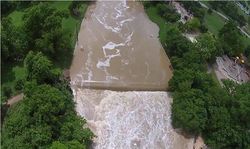
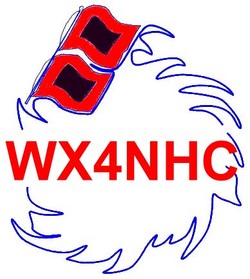 "The WX4NHC test event is also good practice for Amateur Radio operators worldwide, but especially in hurricane prone areas, to test their station's ability to contact WX4NHC, should they need to during a hurricane," Ripoll said. "It was also a good opportunity for NWS Office staff to become aware of the unique capabilities of Amateur Radio during severe weather and disaster communications, when conventional communication modes fail."
"The WX4NHC test event is also good practice for Amateur Radio operators worldwide, but especially in hurricane prone areas, to test their station's ability to contact WX4NHC, should they need to during a hurricane," Ripoll said. "It was also a good opportunity for NWS Office staff to become aware of the unique capabilities of Amateur Radio during severe weather and disaster communications, when conventional communication modes fail."
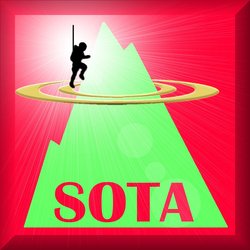 "I'm doing fine," Byland told ARRL. "I didn't get hurt...only bad wind and sunburn on my face! My daughter says my geeky hobby -- ham radio -- saved me from my dangerous hobby -- climbing and mountaineering!"
"I'm doing fine," Byland told ARRL. "I didn't get hurt...only bad wind and sunburn on my face! My daughter says my geeky hobby -- ham radio -- saved me from my dangerous hobby -- climbing and mountaineering!"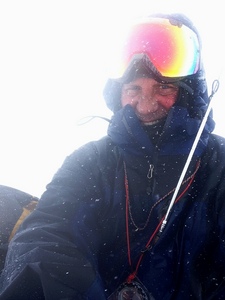
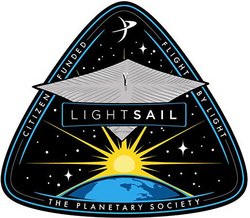 "Our LightSail called home! It's alive!" The Planetary Society's CEO Bill Nye (The Science Guy) said in a
"Our LightSail called home! It's alive!" The Planetary Society's CEO Bill Nye (The Science Guy) said in a .jpg)
.jpg)
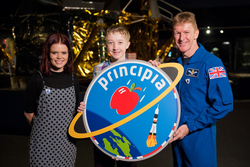
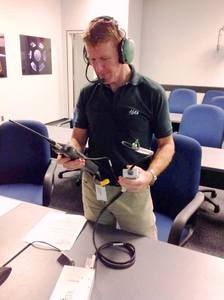

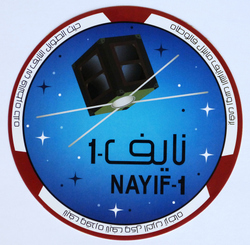 The CubeSat is being developed by the Emirates Institution for Advanced Science and Technology (
The CubeSat is being developed by the Emirates Institution for Advanced Science and Technology (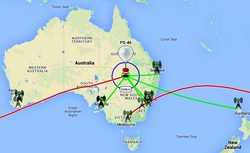 no fluke. Andy Nguyen, VK3YT, launched his PS-46 balloon, which carried an Amateur Radio payload, on May 25. The balloon completed the trip on June 4. Nguyen's earlier
no fluke. Andy Nguyen, VK3YT, launched his PS-46 balloon, which carried an Amateur Radio payload, on May 25. The balloon completed the trip on June 4. Nguyen's earlier 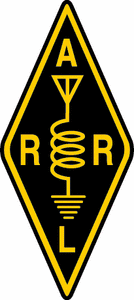 Past Mississippi Section Manager Richard L. Redd, SK Former ARRL Mississippi Section Manager Richard Redd, KA5WRX, of Jackson, died on May 10. He was 75. Redd served as Mississippi SM from 1991 to 1995. Redd was the retired CEO and chairman of the board of Redd Pest Control. Services were May 14 in Madison. Survivors include his wife, Joyce, and several children.
Past Mississippi Section Manager Richard L. Redd, SK Former ARRL Mississippi Section Manager Richard Redd, KA5WRX, of Jackson, died on May 10. He was 75. Redd served as Mississippi SM from 1991 to 1995. Redd was the retired CEO and chairman of the board of Redd Pest Control. Services were May 14 in Madison. Survivors include his wife, Joyce, and several children.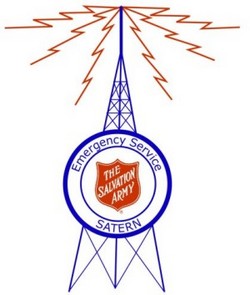 SATERN to Mark The Salvation Army Anniversary in Early July: The Salvation Army Team Emergency Radio Network (
SATERN to Mark The Salvation Army Anniversary in Early July: The Salvation Army Team Emergency Radio Network ( W4DXCC DX and Contest Convention Set for Late September: The Southeast's largest ham radio event, the
W4DXCC DX and Contest Convention Set for Late September: The Southeast's largest ham radio event, the 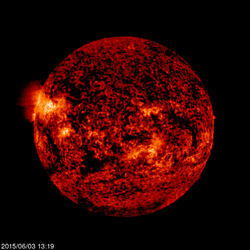 Predicted planetary A index is 5 on June 4-5; 8 on June 6; 12 on June 7-8; then 30, 10, 8, 5, 8, 15; and 12 on June 9-15; 5 on June 16 through July 3, and then 10, 25, 20, and 12 on July 4-7.
Predicted planetary A index is 5 on June 4-5; 8 on June 6; 12 on June 7-8; then 30, 10, 8, 5, 8, 15; and 12 on June 9-15; 5 on June 16 through July 3, and then 10, 25, 20, and 12 on July 4-7.







